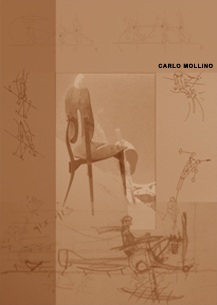

Carlo Mollino was born in 1905 at Torino and studied Architecture. He began a multifaceted carrier, he dealt with the decoration of internal spaces, the photograph, the planning self-propelled, while also he taught, he flew with planes and became instructor of ski. He draws with influences from the natural world of Art Nouveau, the Surrealism and the Futurism and creates unique furniture. He dies from cardiac offence in August 1973.
He was clearly Surrealist from 1930 until 1940. At 1944, Mollino became "sculptor". Between 1950 and 1955, simplified his drawings making furniture, with straight lines or made from curvilinear plywood. He always wanted to reach the result naturally. He accomplished to create modern internal spaces, using or redesigning antique pieces. One from the main characteristics of his work, is the combination of the old and the modern.
At the same time, Mollino loved Alps. He analyzed the manufactures and the provision of buildings and daily objects of mountain culture, using the results of his research when he drew his furniture. He had the talent to see in his brain the object in the space. He had also the faculty to draw also with his two hands simultaneously, even in asymmetrical drawings. And finally he had the sense of proportion, dimension and relation between the departments.
He studied ski with mathematic approach with extension in the physics. He saw the traces that skiers left in the fresh snow, as abstract movement that balances between the laws of nature and the harmonious beauty. As the undulate lines in his drawings. For the same reasons, he loved to make acrobatics with aeroplanes. Moreover, the glass, the mirror and the colorful glass, constitute characteristic of expression of Mollino. He accomplished to impart emphasis in this material, as the transparency, the brightness and the reflection.
In the med ‘50s, Mollino devoted to a collection of elements around woman's body, photographing hundreds women. It does not exist any doubt that woman inspired substantially Mollino. He had the faculty to get ''incarnated'' at the same moment in different personalities: the designer, the photographer, the writer, the skier. He was moving, searching emotions and new stimuli with a way of continuous movement that stopped only with his death.
Mollino created an enormous treasure: tables with humanoid forms, small tables with arabesque, chairs with provocative and released forms, sharp outlines or with vertebral column form, all there, abandoned and covered with dust.
Supervisor: Stylidis Iordanis
Reference Number: 177
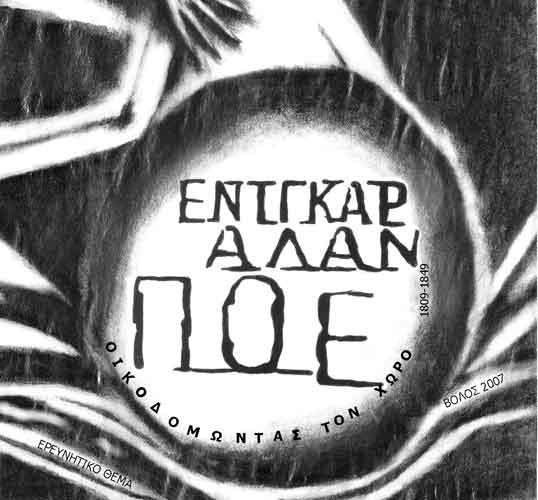

Edgar Alan Poe is regarded as one of the biggest American writers of the 19th century. His work is focusing on gothic tradition, the supernatural and death. This research paper aims to answer the following question: how E.A. Poe composes and constructs his writings.
Poe had the gift of constructing a believable plot out of the most improbable material. The result of this composure- poem, narration, has come from the combination of his imagination and meticulously planned technique.
From the research, analysis and documentation of the elements of space that we encountered in his work, combined with the study of the texts that are relevant to his work, it is evident that Poe constructs this space, having first calculated its needs with remarkable precision
They have limited space. Sometimes it is just a room, other times it is part of a gothic castle or a part of nature that is cut off its natural element. Poe’s preferred environments are gothic castles of the romantic renaissance, with a strong feel of ruin. The rooms are filled with objects and furniture, that are weighted down and dishevelled, like the castle itself. They are being described with painstaking precision. These details are maybe some of the most important clues that lead to the resolvement of the plot and the discovery of the Truth in his stories.
The atmosphere of horror and melancholy is an element that garbs Poe’s castles. The means that he uses in order to succeed in this are storms, vengeful nature, the night- with midnight being the ultimate limit, the character’s shrieks, the sounds that are generated by his spaces, as well as various object.
An interchangeable game between light and shadow is completing this composition. Space, faces and objects are interlinked as they distort and disperse in the intense shadows. These elements are crucial to Poe’s aim, which is the creation of an atmosphere filled with horror.
The heros’ physical appearance is treated as the space that surrounds it. Poe describes them in fine detail, giving emphasis to some parts that are going to be integral to the plot. Physical appearance and space are not two separate elements, but a unity which interchanges according to the plot and topic at hand. The reader is lead to understand that a person functions within a space the same way as objects do.
Poe’s heroes are solitary figures, that chose to live in closed spaces, abandoned in thoughts that regard matters of existence/ substinence, whilst often being in a state between life and death.
Objects and persons make up a unified and irreplaceable complex within the space they occupy.
This research concludes that E.A. Poe utilises primarily the same tools- thematic and technical- in order to produce different spaces- differing in composition from story to story, which gives these spaces a unified “architectural” feel.
These conclusions may be utilised as ‘bridges’, in order to detect the relationship between “the methodology of his work with the way an architect instigates and composes”, a subject that nevertheless is a new research concept.
Supervisor: Margariti Fotini
Reference Number: 156
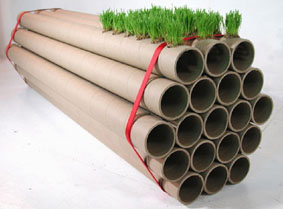

The project presents the use of paper in the work of the Japanese architect Shigeru Ban who has been experimenting with materials and construction methods. His interest in paper has emerged through his research.
The long history of the architecture of paper has its roots in the traditional architecture. Only after the middle of the 20th century did the paper products start being widely used in constructions related to architecture (ie insulation, chairs, doors). Even today there are only few examples of buildings made of paper.
The paper tubes which are being used for storing and transportation have been constantly developing. New methods for making them waterproof, fire resistant and reinforced to stresses have been applied.
Shigerou Ban has been the first to use paper tubes in architecture in the exhibition for Aalto in 1986.The outcome of many experiments in laboratories is the use of paper in building the Paper House in Japan in 1995. By the end of 2006 he had completed 22 paper constructions too difficult to be classified under one category as they range in cost, construction conditions, location, and use. In order to study better and analyze his constructions, a basic categorization is attempted according to their structure and shape.
Two characteristic examples are analyzed as far as their shape and cost and time requirements are concerned (Paper Log Houses and Paper Arch).Information is given on the designs and method of construction. The shape and structure are analyzed and details of their foundations and joints are drawn so, the way the architect adjusts the elements of the construction in relation to any given limitations is clearly presented.
The choice on materials, structure, construction method and details depends on existing cost, time and local conditions. In the two examples, the conditions and requirements were totally different and the construction elements are adjusted accordingly. They belong to different morphological categories, they are both small scale constructions so the analysis is to the same extent.
Supervisor: Vrontissi Maria
Reference Number: 185
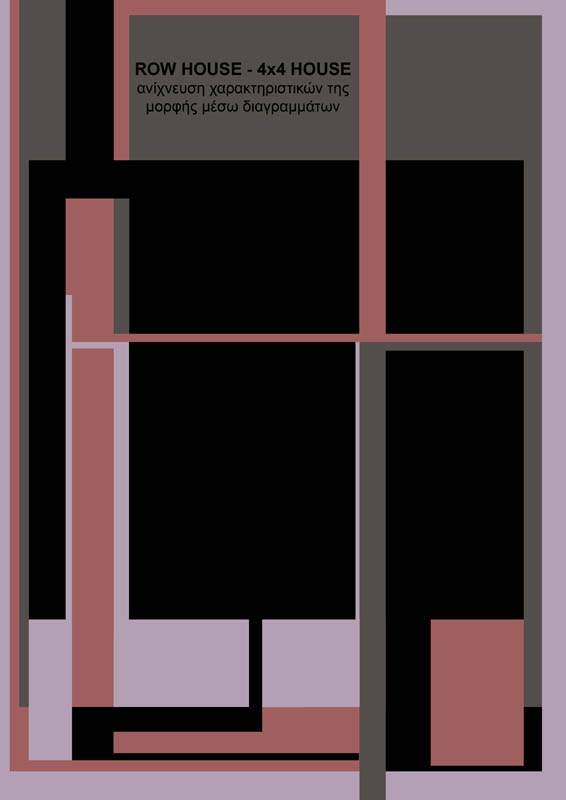

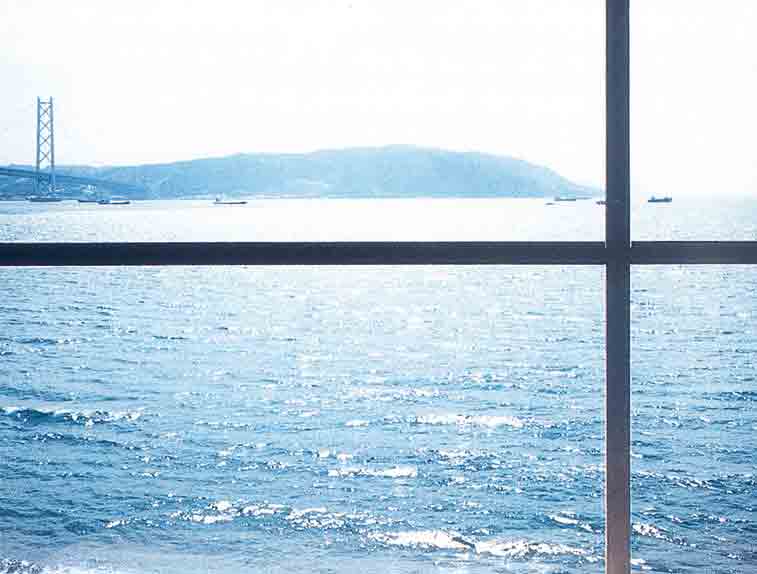

The present inquiring subject is related with the study of two residences of small scale of the Japanese architect Tadao Ando. It is the 4x4 house and Row house Sumiyoshi, extensive report for what is held inside the copy that is accompanied with photographic material. The method of recording and analysis constitutes also the core of work. It has to do with the diagrammatic representations (diagrams). With this process, I place as my fundamental objective electing all these well hidden information that does not become immediately perceptible and bring in the surface elements for the intentions of architect and useful conclusions on the strategy of planning at the all duration of the final composition.
One of the criteria of choice of the particular residences constituted the fact that they belong in the space of small manufactures with the attribute that they have they provide the permanent human living. Is it feasible therefore for somebody to live or to live together with others in a such house without all the comforts and spaciousness of conventional model of living? The second criterion of choice was the fact that Ando is characterized for the social extensions that acquire his architecture placing the human factor into space particularly important, while the basic element of his compositions, constitute the heavy and bulky structural systems that he uses. This make renders his energy to work in the level of micro constructions still difficult, requiring particular handlings of volumes and his forms. In the same unit are reported also the characteristic traits that dominate and coexist in the all buildings of architect and become perceptible and in the studied residences.
The methodology that is followed and concerns in the planning of diagrams, constitutes one from the more important parameters of approach of all inquiring subject. In this part there are recorded the three basic parts that compose it, the technique, the categorisation of produced diagrams and the deposit of personal experience that I acquired from this process. The first unit is completed with the effort of comprehension of term of word <<[diagramma]>> realising and analyzing two categories: the scientific and abstractive diagram.
The second unit it is about the presentation of the two residences and the total number of the diagrams that I have drawn. From the first there are described the two houses and after this part there are presented with photographs and existing drawings while afterwards the completion of this phases, there are presented the 28 diagrammatic representations accompanied from their explanation in the next department of unit.
Finally, in the conclusion, there are recorded the conclusions that result from the study that constitutes asked this attempt of recording through this method.
Supervisor: Lykourioti Iris
Reference Number: 164
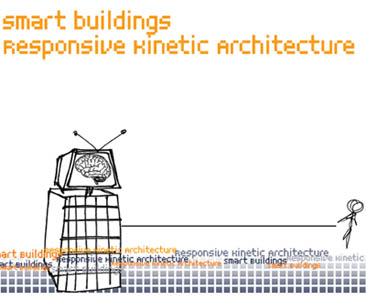

This study introduces and defines the term Smart Buildings. A Smart Building is a structure that embodies technological innovations and has the ability to respond in real time to the user’s desires. The detection of users’ needs and their satisfaction comprise the basic motive for a Smart Building creation. The advantages that a user enjoys are comfort, pleasure, security, saving energy, productivity, and increase lifetime of the building.
Basic parameter for the study constitutes the human factor and so the relation between the user and the building is being examined. Intention is the quest of intelligent environment’s abilities and as well the optimum user’s communication with the building.
Through a historical flashback from the age of the machine to the age of information and image, from Lewis Mumford approaches and history of architecture, first conclusions about smart buildings’ course are derived. McLuhan’s theory about new technologies defines the relationship between man-user and intelligent environments.
The study focalizes in the definition of the Smart Building and disjoins it from a conventional building. Their difference is localized at the user’s communication with the building and at the active respond and the services that can provide. A Smart Building can correspond statically or with motion. As statical correspond can be described the automation on light control, heating control, ventilation, the image and sound management. The structure that the active respond is accomplished by motion, represent a new reality in architecture. Responsive Kinetic Architecture is called the structure that mutate it’s formation in real time in order to correspond in a different operating program. A structure like this is resembled to the human nervous system, as it can pump stimulus and command for reaction.
A smart building’s system function accord to the procedure: information input – analysis, process – output, respond. The field of communication in smart buildings is not restricted at the user’s contact. A smart building is able to receive information from the outdoor environment and adapt in proportion with it, for the best function of the indoor space.
The issue that this study treats is new enough at the architecture field to find efficient bibliography. This was about architectural projects, indicant to the research that take place, with conventional constructions, that respond statically and with constructions that respond kinetically. A questionnaire’s composition aims at giving answers, concerning the smart building’s design, it’s aesthetic, the grade of flexibility and users’ management.
Supervisor: Tsangrassoulis Aris
Reference Number: 166


Kastro of Sifnos constitutes an appreciable settlement in the island for his locality, his history and his architecture. His geography and the land-planning organisation of residences in the settlement present particular interest and are results of his medieval history and consequent of the conditions of existence in the settlement those years.
The architecture of settlement is interpreted through the needs of residents of season and it presents particular interest because it is maintained until today. In the research that follows, the history of island and his general characteristics were studied and then, with the research on the spot in the island, we collected elements for the history, the architecture, and the land planning of Kastro but also the residence in this. Also the categories of settlements, their manufacture and the daily life of residents were studied. The current residents helped us to comprehend the difficulties of that season and they put us up in their residences in order to see their situation and be informed for their way of manufacture.
At the same time studying the climatic data of region, we wondered for the conditions of existence in the interior of residences and we followed an inquiring process with the help of design programs. Through the study of four residences that was selected, aim of this research was the investigation of their energy behavior. In each building the morphology, the manufacture and the materials that were used, were examined and at the same time the social and economic elements that led to later interventions. The materials of manufacture of these residences were investigated with detail, aiming at their simulation in models, with the help of design programs. Importing all the essential elements about the manufacture of residence, place, orientation, we were informed for the required charges of heating and refrigeration of residences all the time but also for the levels of natural lighting in the interior.
Aim of programs was to appreciate the effect that the different characteristics of form and place had, that had been applied in the each type of building, inthe internal microclimate that they developed. The residences that were studied were not manufactured obviously with base their energy output, as it becomes today, but potentially it was followed daily practical that come out through the experience. Consequently the results from the modelling of buildings were used for comparison between them and also in order to know their current needs, to function in conditions of comfort, with base the current data.
The results, that were collected, helped in the export of conclusions on the daily existence in the settlement of Kastro the 18th century. At the same time the reduction of this results in the current data leads us to new conclusions and thoughts that concern the modern social needs and requirements of season. The modern need for ‘energy independent’ residences, released by no renewable sources of energy and that exploit the natural sources, is connected with the object of research, because the results lead to ascertainment which are capable of the achievement of this objective.
Supervisors: Tsangrassoulis Aris, Theologidou Cleopatra
Reference Number: 181

